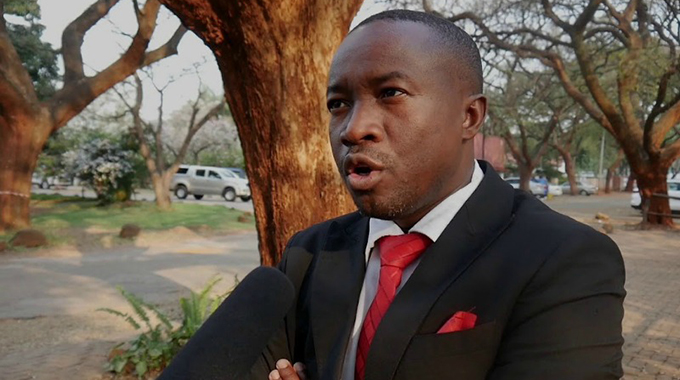EDITORIAL COMMENT: Accelerate local fertiliser production

WITH world fertiliser shortages looming, especially nitrogenous fertilisers, as a result of the Russia special operation in Ukraine, Zimbabwe needs to rapidly accelerate its programmes to ramp up local production.
Phosphates are perhaps the easiest to manage. We have a mine at Dorowa and Zimphos can process the output.
The expansion programme is mapped out, and work has in fact already started, but the Minister of Industry and Commerce, Dr Sekai Nzenza, says around US$80 million is needed to complete work for these two State-owned entities.
This is not a dramatic sum as investments go these days and hardly unaffordable, so presumably the necessary investment can be made fairly quickly and at least adequate supplies of that crucial fertiliser made available by the start of the summer season, remembering that phosphates are needed when planting starts.
For the potassium fertilisers, Belarus and Russia supply 40 percent of global supplies. Russia itself supplied 22 percent of global ammonia gas last year, a major component of nitrogen fertilisers, and 14 percent of global urea, a final form of nitrogenous fertiliser.
Even if we were not buying from Russia and Belarus, other people are switching to the producers who were supplying us, so the potential global shortages are worrisome.
Although our relationships with Belarus and Russia have not been affected, transport routes probably have since the closest export ports from those two countries, on the Black Sea, are largely closed with the present conflict and blockades.
Sable Chemicals once used to supply a large percentage of Zimbabwe’s nitrogenous fertiliser using a well-established, but fairly rare method, getting nitrogen by liquefying air and hydrogen through electrolysis from water and then combining the two in a third process to get the ammonia.
This was viable when there was a surplus of generation capacity at Kariba South which is why it was set up.
Basically as operating hydro generators is almost cost free, unused capacity could be used for extremely low operating costs and the resulting electricity sold at a special low price to Sable. The company might have had to schedule production runs for out of peak hours.
It could also pick up some loose change to fund operations by selling the waste oxygen from the liquefaction and electrolysis processes to ZiscoSteel, one reason why Sable is in Kwekwe – a short pipeline from Redcliff. Purity did not have to be at medical oxygen levels.
As the thermal component in Zimbabwe’s electricity mix grew, which pushed up operating costs of generation considerably, besides the capital costs that have to be repaid from output, followed by the shortfalls in generation capacity as the economy grew, Sable started switching over to the far more common use of ammonia from natural gas, the reason why Russia is so dominant in markets, although Mozambique was a major source for Zimbabwe.
This, incidentally, is a major reason why Sable rushed to sign provisional agreements with the Australian company exploring for natural gas in Muzarabani, agreements that included a pipeline to Kwekwe.
Finding mineral sources of potassium is not impossible. For a start it is a component of most granites and a fair number of pure organic growers.
The ones who never use artificial manufactured fertilisers, do use the “two mica” granites, grinding it to dust to apply to their fields. Better concentrations can be found if the rock is processed.
If Zimbabwe could find reasonable deposits of potassium chloride or potassium sulphate we would be in the good seats.
So we need to be looking very hard and rather fast for alternative sources of raw materials for fertiliser, tying in potential suppliers by cashing in on any favours we might be owed to making it clear that we are a friend of the supplier, and perhaps even checking if Sable can resume or increase its ammonium production from air and water.
Some of these local sources might take time to develop, since we were assuming that at least raw materials for fertiliser could be imported with the expensive phosphates locally mined.
But whatever short-term measures are taken to ensure adequate supplies of fertiliser and adequate supplies of raw materials for more local production and blending, we need to accelerate our efforts to find as much of the raw materials locally as we can, even if this takes more than a few months.
Whatever special efforts are taken globally, and by our Government and industry, to ensure Africa gets its fair share, over-reliance on foreign suppliers is obviously not a very good idea.
The present conflict in Eastern Europe might not be the last problem we face, and having sources “down the road” is obviously a very good idea, especially as we wish to raise agricultural production and any rationing globally makes increases in output of crops harder.
We have been through other bottlenecks recently, such as our successful efforts to obtain Covid-19 equipment and vaccines, and so special high-priority drives are possible.
But looking at organic fertilisers is not a bad idea. Even if we do obtain adequate supplies of the manufactured fertilisers through local production and imports, prices are rising fast globally and if farmers can reduce costs and use organic fertilisers, that will be to the benefit of everyone.
The most fanatical organic farmers have identified and use a wide variety of sources and some of these can be applied, even if not in the quantities required, to ease costs and use.
The agronomists also need to be able to advise farmers more precisely how to use fertiliser with maximum economy and how to set up farming systems that minimise leaching and other waste.
Once again Zimbabweans need to apply their ingenuity to the maximum for us to pull through in a difficult time.









Comments